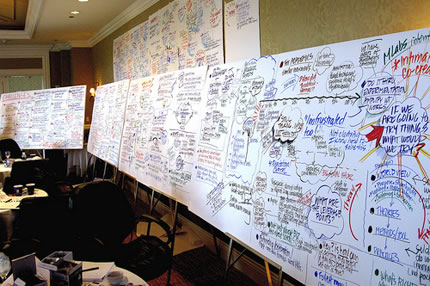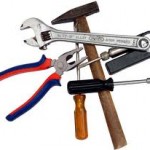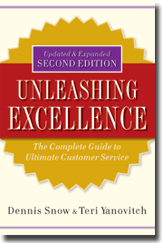Service Standards Make Job Easier
Companies that have service standards are not strict and rigid. Companies that have service standards are not stifling creativity in their service delivery. Companies that have service standards are not restricting innovation in the customer experience. Service Standards are empowering and are tools to make the job of the employee and the manager so much easier. Why? Because they make it very clear as to the behaviors that are accepted and not accepted in how one treats a customer, both internal and external.
Employees want to know what is expected of them. In fact, NOT knowing what is expected, is in the top six reasons as to why employees leave a company, according to Gallup. Employee want to be held accountable and for their colleagues to be held accountable to the same standards. When service standards have not been defined, this is impossible to do. Without service standards, employees make up their own or adhere to the standards they learned from a previous place of employment.
Service Standards create a consistency across an organization because they should be the same for all departments, 365 days a year and 24/7. Service standards are essential for a seamless customer experience. They should not change with the time of year, day of month, or the economy ups and downs. It becomes confusing to employees when they do.
You don’t need to have a lot of service standards. The key is to choose three, four, or five, that will have a significant impact on defining the experience customers will have with your organization. For example, Ritz Carlton has three service standards, Walt Disney World has four service standards.
For managers, the job of managing becomes easier too. The service standards are freeing in that they let the manager manage the behaviors and not get sucked into becoming the “tough old manager” just because she is the one who is willing to call an employee out when they are exhibiting bad customer service behaviors. With clear service standards, managers are simply making sure that employees are adhering to the standards that were agreed upon in their hiring and are a part of the culture of the organization.
Chapter 4 of Unleashing Excellence has many examples of service standards that various organizations have chosen as the “rules of engagement” for providing customer service. These standards when prioritized, provide a template to employees in those moments of truth, to know how to make the best service decision. Service standards are core tools for delivering consistent excellent service.
Watcha’ Readin’?
Every morning, the law firm of Baker, Donelson, Bearman, Caldwell & Berkowitz reviews the list of clients who will be visiting the office that day, noting the industries the visiting clients are in. Then, instead of having generic magazines in the waiting room, they put out magazines that are of interest to members of those industries.
They have to stay on top of their client list so that they have appropriate magazines, but imagine how much better their approach is than the norm. Most waiting rooms have the standard, general-interest magazines that, more often than not, are months (or years) out of date.
I can imagine the Baker Donelson receptionist saying to a client from the construction industry, “Good morning, Mr. Peterson; Janice will be ready for you in a minute. I just put out the latest issue of Builder News for you to look at while you’re here.” I have to imagine that Mr. Peterson would be impressed by the personal touch offered by the firm. And a subtle message is also communicated – “Baker Donelson focuses on the latest trends in my industry, since they subscribe to my industry’s periodicals.”
What can you do to demonstrate personal interest in your customers?
Innovation Stimulation
 Today’s Wall Street Journal has an interesting article, “Entrepreneurs Seek to Elicit Workers’ Ideas.” The premise of the article is that a company’s employees are often a vast and untapped reservoir of ideas for improving the business. One company CEO is quoted as saying, “Wow, we have a lot of smart people back here, and we’re not tapping their knowledge.”
Today’s Wall Street Journal has an interesting article, “Entrepreneurs Seek to Elicit Workers’ Ideas.” The premise of the article is that a company’s employees are often a vast and untapped reservoir of ideas for improving the business. One company CEO is quoted as saying, “Wow, we have a lot of smart people back here, and we’re not tapping their knowledge.”
We heartily agree.
A company’s employees deal with the same challenges, issues, and complaints day in and day out and typically know exactly what ticks off customers. The problem is that many organizations simply don’t ask their employees to help identify and solve the issues. Or they do ask (because the employee survey said that management never asks for input) but never take action on the suggestions. Which is too bad, since our experience shows that employee solutions are usually MUCH less expensive than management’s solutions.
The one quibble we have with the WSJ article is the bias for offering cash incentives for submitting ideas – $50 per implemented idea; $100 for 100 innovative ideas, etc. We like money as much as anyone, but we believe that improving the organization should be part of the organization’s culture and participating in the forward movement of the company should simply be part of the job description.
We’ve seen many organizations implement a “bounty” for ideas only to find that employees begin hording ideas out of fear that someone will steal them for the bounty, or become enraged that “Joan got $50 for her stupid idea, and I got nothin’ for my great idea.” And how about the employee who gets $50 for an idea that saves the company $10 million? Trust us; someone is going to feel shortchanged.
Check out the WSJ article, but also know that we feel collaboration is the name of the innovation game. The Service Obstacle System described in Unleashing Excellence provides several tools for getting your employees involved in identifying and eliminating (or alleviating) barriers to excellence. The Continuous Service Improvement Meeting Agenda is a good place to start.
Do your employees view innovation as a part of their jobs?
Solving a Customer Frustration
 One of the best ways to distance your organization from the competition is to solve a problem that frustrates your industry’s customers. A recent Orlando Sentinel article provides a great example of this approach: Disney by Cell Phone.
One of the best ways to distance your organization from the competition is to solve a problem that frustrates your industry’s customers. A recent Orlando Sentinel article provides a great example of this approach: Disney by Cell Phone.
The number one guest complaint at Walt Disney World is about long wait times for the rides. And over the years Disney World has implemented several tools to help minimize the problem. Tools include:
- Wait time signs
- Entertainment while waiting in line
- Making the line part of an attraction’s theme or “show”
- Tip boards around the park with posted wait times for popular attractions
- FastPass® (a mechanism for making a “reservation” for particular attractions)
Disney World (and Disneyland) has just introduced a new way to help reduce wait time frustrations for Disney guests – “Mobile Magic.” It’s a smartphone application that allows guests to get real time information about attraction wait times, character greetings, and other park events. The application allows guests to get the most out of their Disney visit by helping them make informed decisions about what to do next.
The full application of Mobile Magic is only available to Verizon subscribers right now, but a scaled down version is available to subscribers of other mobile services. The full application will soon be available to anyone with a cell phone.
The reason for sharing this story isn’t to brag about Disney, it’s to point out an example of a relentless quest to solve an ongoing customer frustration. Every industry has its inherent customer frustrations, and most companies just accept them as givens. But customers don’t accept them as givens; we see them as reasons to look for alternatives.
You don’t have to do an expensive survey to find out what frustrates your customers. You know exactly what frustrates them. Those recurring complaints and those negative customer interactions that burn out your employees tell you what the problems are. What’s needed is action.
So we challenge you to pick one customer frustration that you’ll commit to solving. Start small if necessary; but commit to one. Bring in some employees from your operation and go to work coming up with and implementing a solution. Or you can use this link to a Service Improvement Meeting agenda which guides you through a team meeting for identifying and developing solutions to customer frustrations. Once you’ve solved a problem, go on to another one.
Of course, Unleashing Excellence devotes an entire chapter to solving customer frustrations – “The Service Obstacle System.” The approach outlined in the chapter provides a step-by-step approach for crafting a barrier-busting system.
Imagine if you just identify and solve one customer frustration per quarter. Four improvements a year is huge! It will put you in the “world-class” category, and customers will wonder, “Why can’t other organizations do it like they do?”
Please send us your questions, or share examples of how your organization (or any other organization) has solved a customer frustration. We hope to make this blog a forum for best practices!

